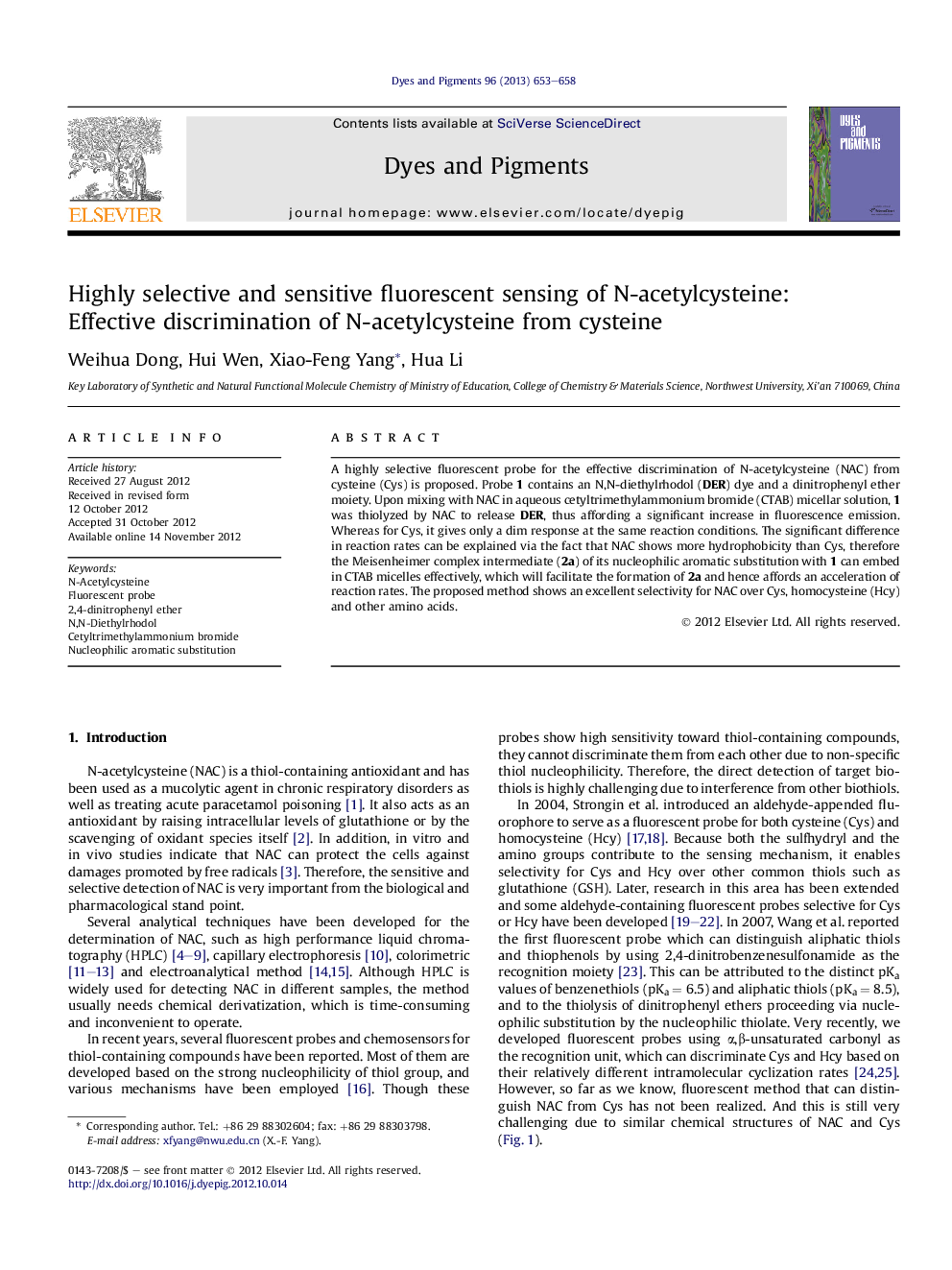| Article ID | Journal | Published Year | Pages | File Type |
|---|---|---|---|---|
| 176740 | Dyes and Pigments | 2013 | 6 Pages |
A highly selective fluorescent probe for the effective discrimination of N-acetylcysteine (NAC) from cysteine (Cys) is proposed. Probe 1 contains an N,N-diethylrhodol (DER) dye and a dinitrophenyl ether moiety. Upon mixing with NAC in aqueous cetyltrimethylammonium bromide (CTAB) micellar solution, 1 was thiolyzed by NAC to release DER, thus affording a significant increase in fluorescence emission. Whereas for Cys, it gives only a dim response at the same reaction conditions. The significant difference in reaction rates can be explained via the fact that NAC shows more hydrophobicity than Cys, therefore the Meisenheimer complex intermediate (2a) of its nucleophilic aromatic substitution with 1 can embed in CTAB micelles effectively, which will facilitate the formation of 2a and hence affords an acceleration of reaction rates. The proposed method shows an excellent selectivity for NAC over Cys, homocysteine (Hcy) and other amino acids.
Graphical abstractFigure optionsDownload full-size imageDownload as PowerPoint slideHighlights► The fluorescent probe 1 contains an N,N-diethylrhodol (DER) dye and a 2,4-dinitrophenyl ether moiety. ► Probe 1 can discriminate N-acetylcysteine (NAC) from Cysteine (Cys) in CTAB micelles. ► NAC and Cys can be discriminated based on differences in their hydrophobicity. ► NAC results in the thiolysis of 1 to release the fluorophore in CTAB micelles.
